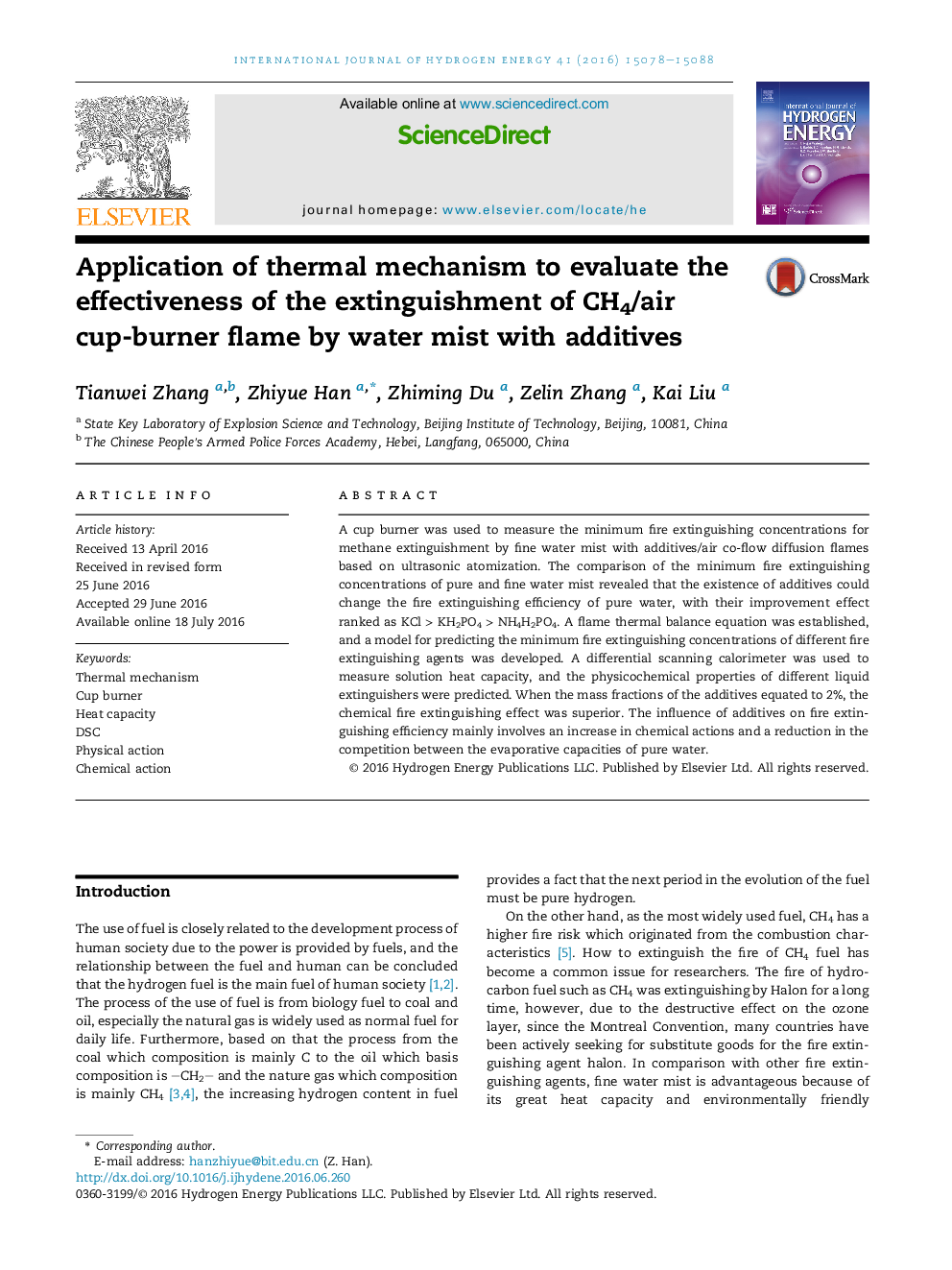| کد مقاله | کد نشریه | سال انتشار | مقاله انگلیسی | نسخه تمام متن |
|---|---|---|---|---|
| 1269382 | 1497392 | 2016 | 11 صفحه PDF | دانلود رایگان |

• The minimum extinguishing concentration of methane/air flame was measured.
• A simplified thermal model was proposed to predict the physical action.
• The order of additives to improve the extinguishing efficiency is KCl > KH2PO4 > NH4H2PO4.
• The chemical extinguishing effect is the best when the mass fractions equate to 2%.
A cup burner was used to measure the minimum fire extinguishing concentrations for methane extinguishment by fine water mist with additives/air co-flow diffusion flames based on ultrasonic atomization. The comparison of the minimum fire extinguishing concentrations of pure and fine water mist revealed that the existence of additives could change the fire extinguishing efficiency of pure water, with their improvement effect ranked as KCl > KH2PO4 > NH4H2PO4. A flame thermal balance equation was established, and a model for predicting the minimum fire extinguishing concentrations of different fire extinguishing agents was developed. A differential scanning calorimeter was used to measure solution heat capacity, and the physicochemical properties of different liquid extinguishers were predicted. When the mass fractions of the additives equated to 2%, the chemical fire extinguishing effect was superior. The influence of additives on fire extinguishing efficiency mainly involves an increase in chemical actions and a reduction in the competition between the evaporative capacities of pure water.
Journal: International Journal of Hydrogen Energy - Volume 41, Issue 33, 7 September 2016, Pages 15078–15088